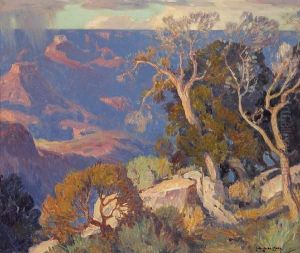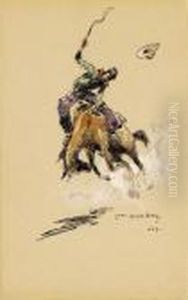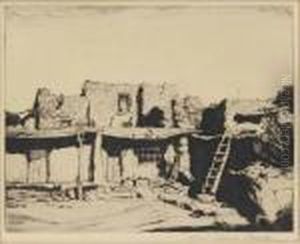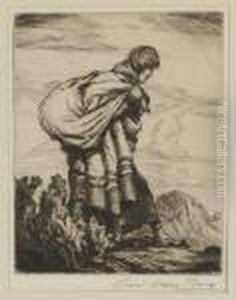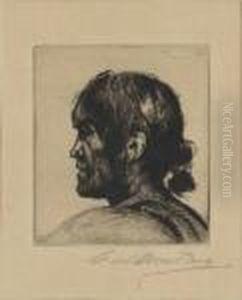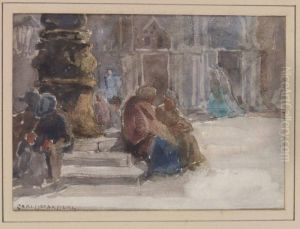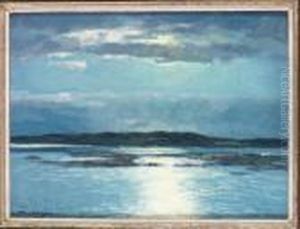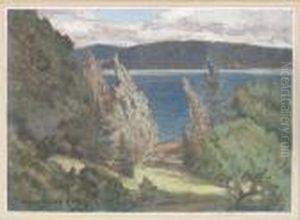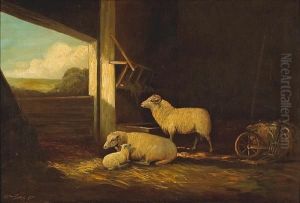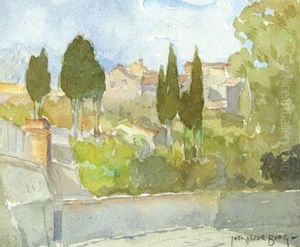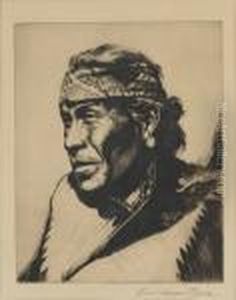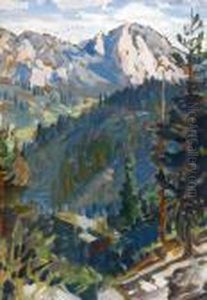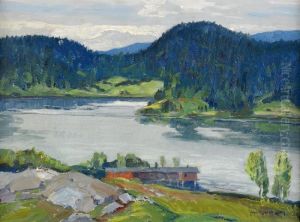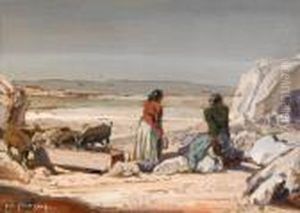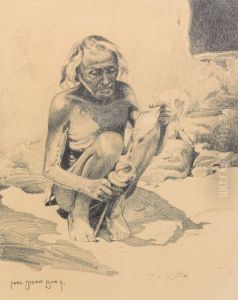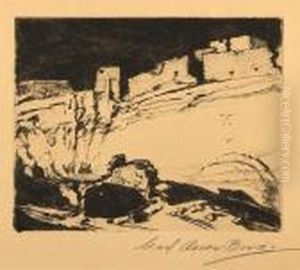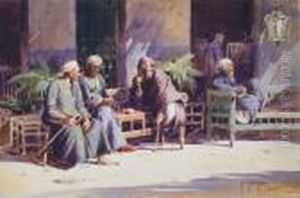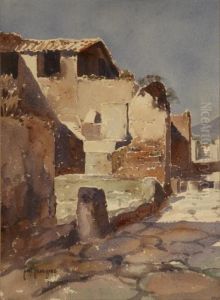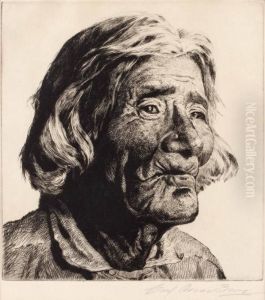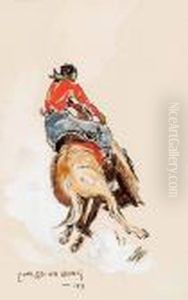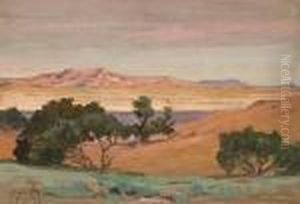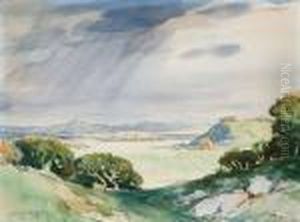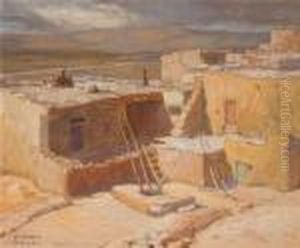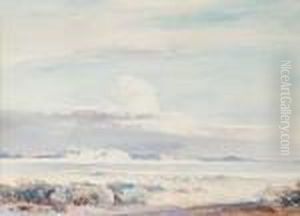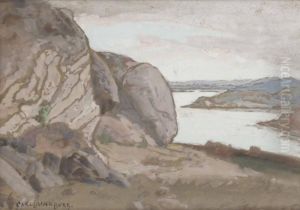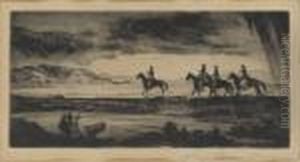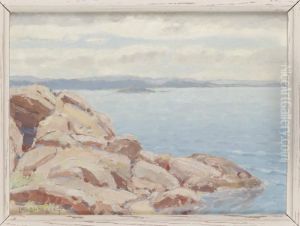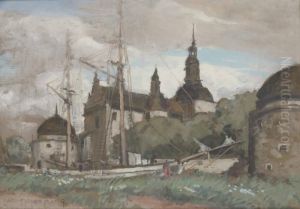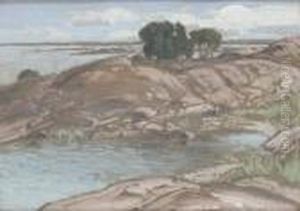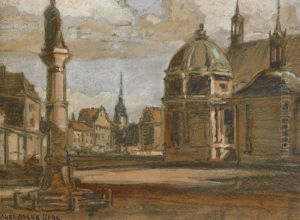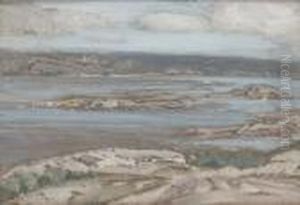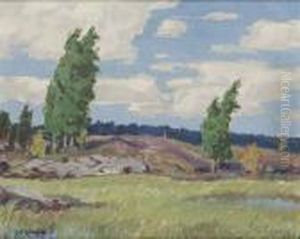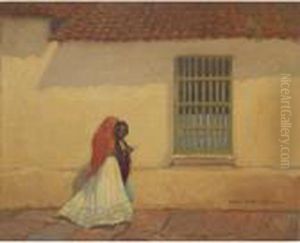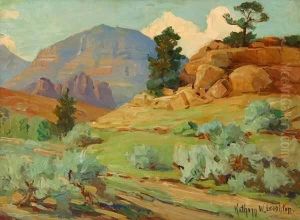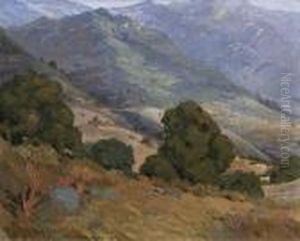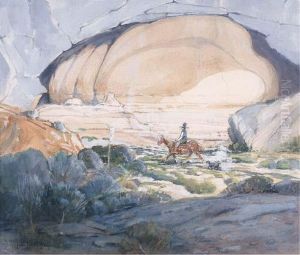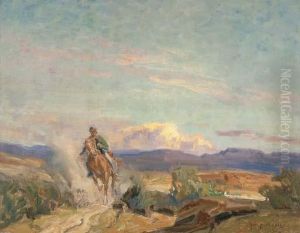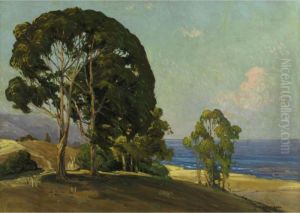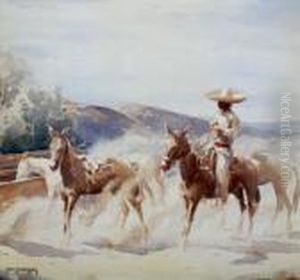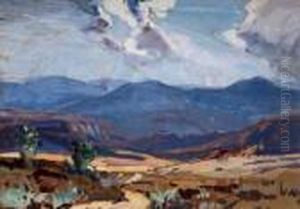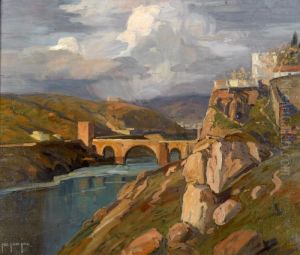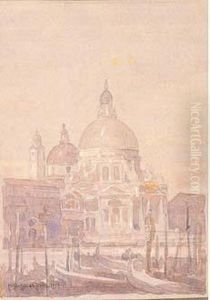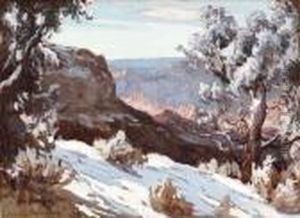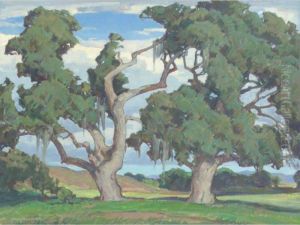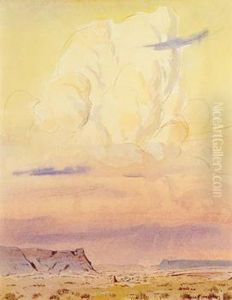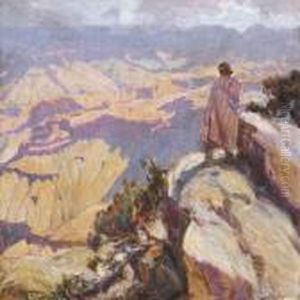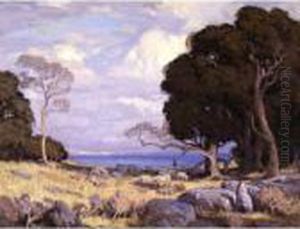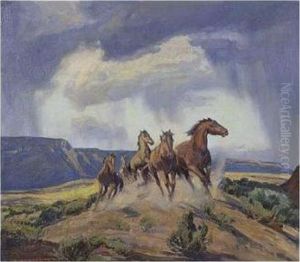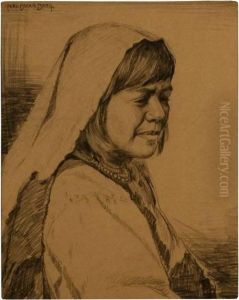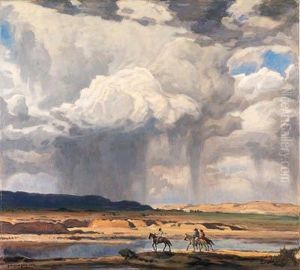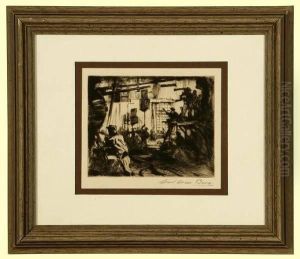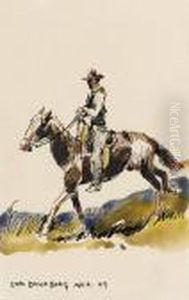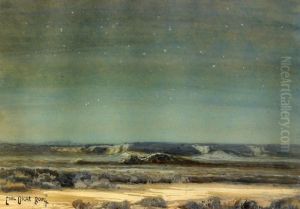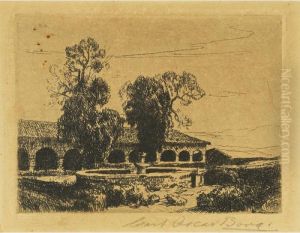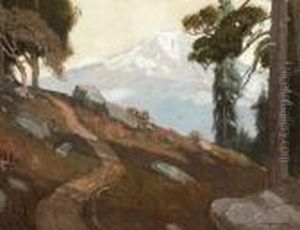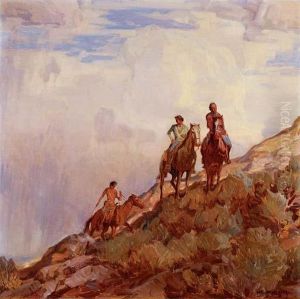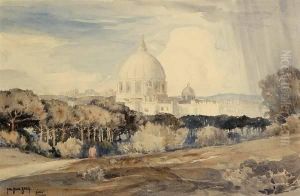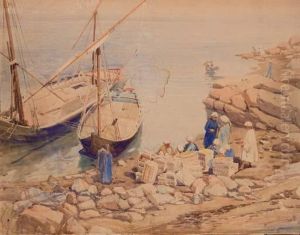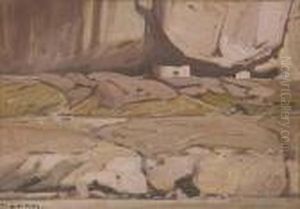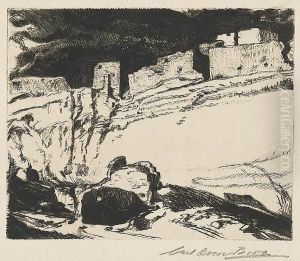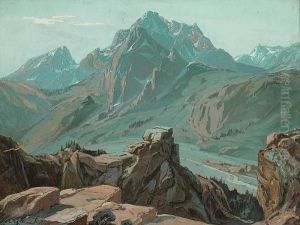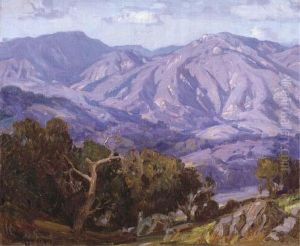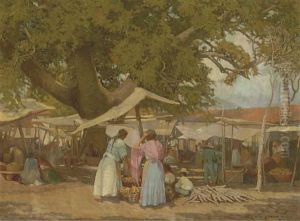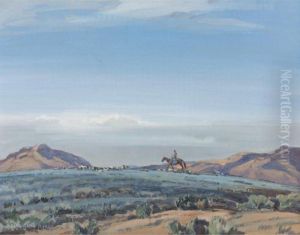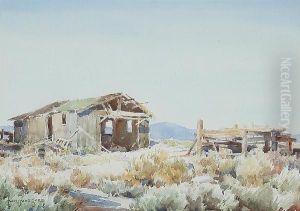Carl Oscar Borg Paintings
Carl Oscar Borg was a Swedish-born American painter and illustrator who made significant contributions to the art world in the late 19th and early 20th centuries. Born in Grinstad, Sweden, on March 3, 1879, Borg had a humble beginning and was largely self-taught in his early years. Driven by his passion for art, he left Sweden at the age of 15 and eventually made his way to London, where he worked as a seaman. This early experience would later influence many of his maritime paintings.
Borg's travels brought him to the United States by the late 1890s, where he settled in California. His talents quickly garnered attention, and he became an influential figure within the art community, particularly in Los Angeles. Borg was fascinated by the American West, and this fascination deeply influenced his work. He became renowned for his landscapes, seascapes, portraits, and depictions of Native American life, which were characterized by a remarkable level of detail and a profound respect for his subjects.
In 1903, Borg's work caught the eye of Phoebe Hearst, mother of William Randolph Hearst, who sponsored Borg to study in Europe. During this period, he further honed his skills and was influenced by various European art movements. Upon returning to the United States, Borg continued to develop his unique style, blending European techniques with American themes, particularly those of the West.
Throughout his career, Borg was an active participant in the cultural life of California and was instrumental in the development of its art scene. He taught at the California Art Institute and the Santa Barbara School of the Arts, influencing a new generation of artists. Borg's work was widely exhibited and received numerous awards, including gold medals at the Panama-Pacific International Exposition in 1915.
Carl Oscar Borg passed away on May 8, 1947, in Santa Barbara, California. His legacy lives on through his contributions to American art, particularly his captivating representations of the American West and its people. Borg's work is held in high regard and can be found in many major museums and private collections around the world.
